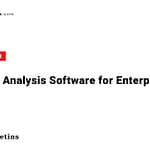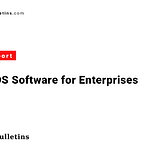Microsoft 365 Copilot may be one of the most talked-about AI tools in the enterprise space—but is the excitement translating into real value? According to Gartner, many organizations are still struggling to justify large-scale deployment due to cost, complexity, and uncertain ROI.
At the recent Gartner IT Infrastructure, Operations, and Cloud Strategies Conference in Sydney, research VP Dan Wilson laid out some stark truths. While 40% of surveyed leaders are piloting Copilot and 19% plan to, only 5% are ready to scale it in 2025. Most organizations are watching and waiting, unsure if the tool can live up to its promise.
The Productivity Promise Meets Real-World Roadblocks
Wilson noted that while Microsoft’s marketing for Copilot has been “brilliant,” the real-world execution doesn’t always match the pitch. Many organizations have found the effort required for risk mitigation, data governance, and employee training to be far greater than expected.
Challenges like content sprawl, data leakage risks, and a lack of governance tools in Microsoft 365 environments are forcing businesses to either limit Copilot to trusted users or invest in additional solutions like Microsoft Purview, third-party add-ons, or E5 license upgrades—all of which raise the total cost of ownership.
Is Your Team Actually Using Copilot? Maybe Not
Adoption metrics are also fuzzy. Microsoft defines usage as once in 28 days—hardly a meaningful benchmark. Wilson argued that true adoption should mean daily use, otherwise the tool may not be worth the license cost.
Interestingly, when Copilot access is threatened, employees tend to fight to keep it—a sign that the tool does offer value, but perhaps in pockets rather than at scale.
Employee Enablement Needs a Rethink
One of the biggest hurdles? Enablement. Simply providing access to Copilot doesn’t automatically increase productivity. Employees need continuous guidance, not one-time training. Wilson likened it to “parenting a teenager” rather than handing over a rulebook.
He emphasized that enablement cannot be IT-driven alone. HR, operations, and leadership teams must work in tandem with IT to create practical use cases and track real business outcomes.
The Path Ahead: Continuous Evaluation Over Blind Deployment
Gartner’s bottom line is clear: Microsoft 365 Copilot is still evolving. While today’s ROI may be hard to measure, results could improve rapidly. But it requires a long-term, collaborative approach that balances tech deployment with business goals and employee needs.
As Wilson put it, “If you try to fight [this change], it’s just going to overwhelm you.”
Takeaway
Microsoft Copilot offers tremendous potential—but unlocking its value isn’t plug-and-play. Enterprises must navigate hidden costs, rethink adoption metrics, and focus on enablement strategies beyond IT to truly benefit from the AI revolution.













